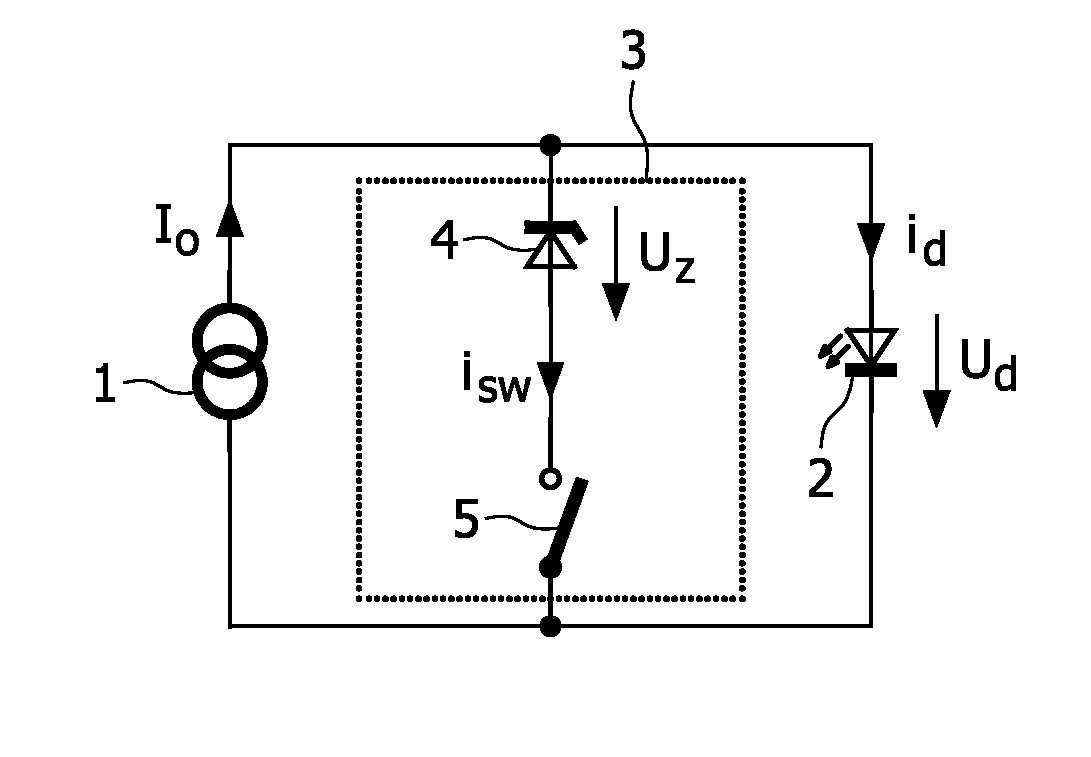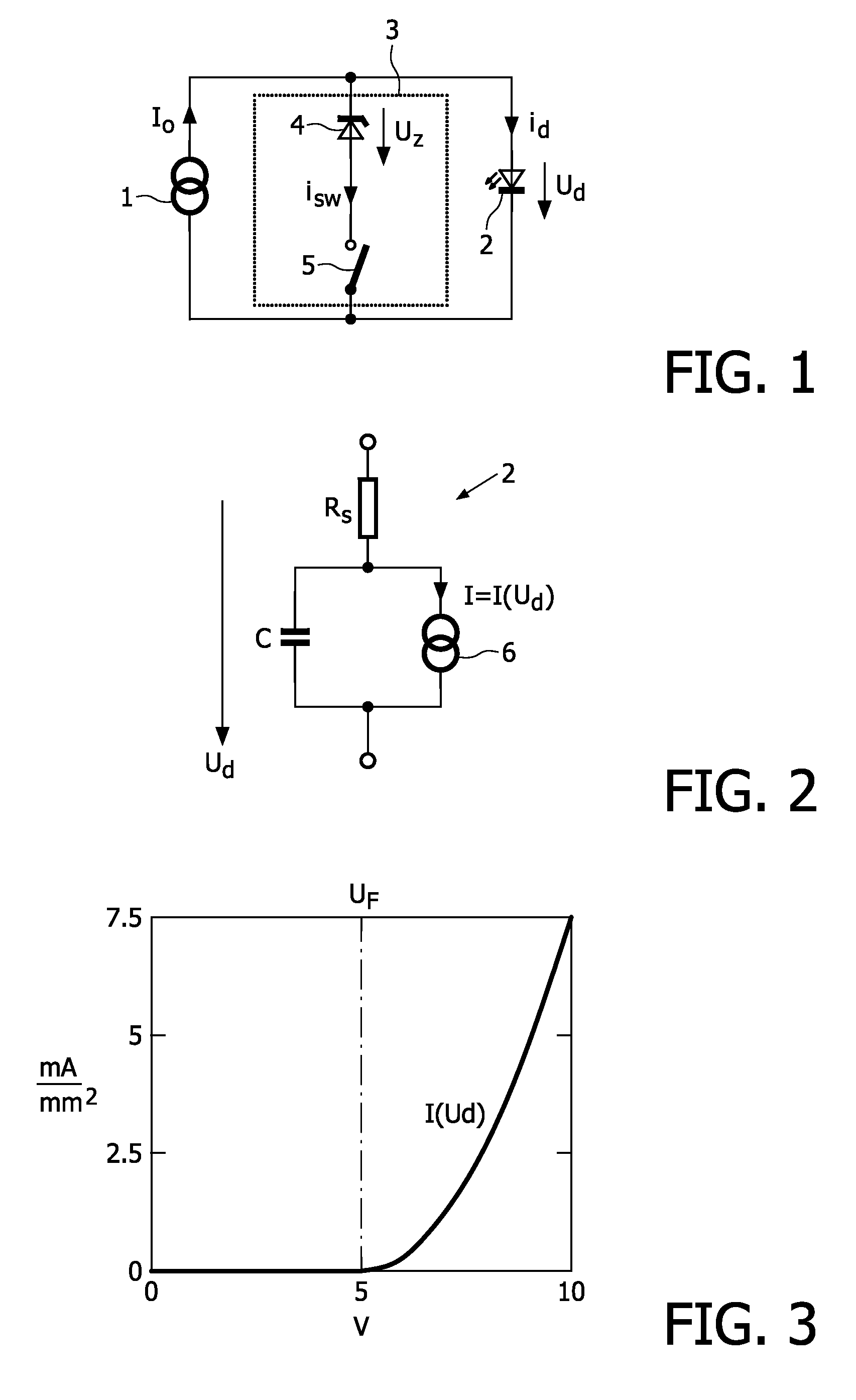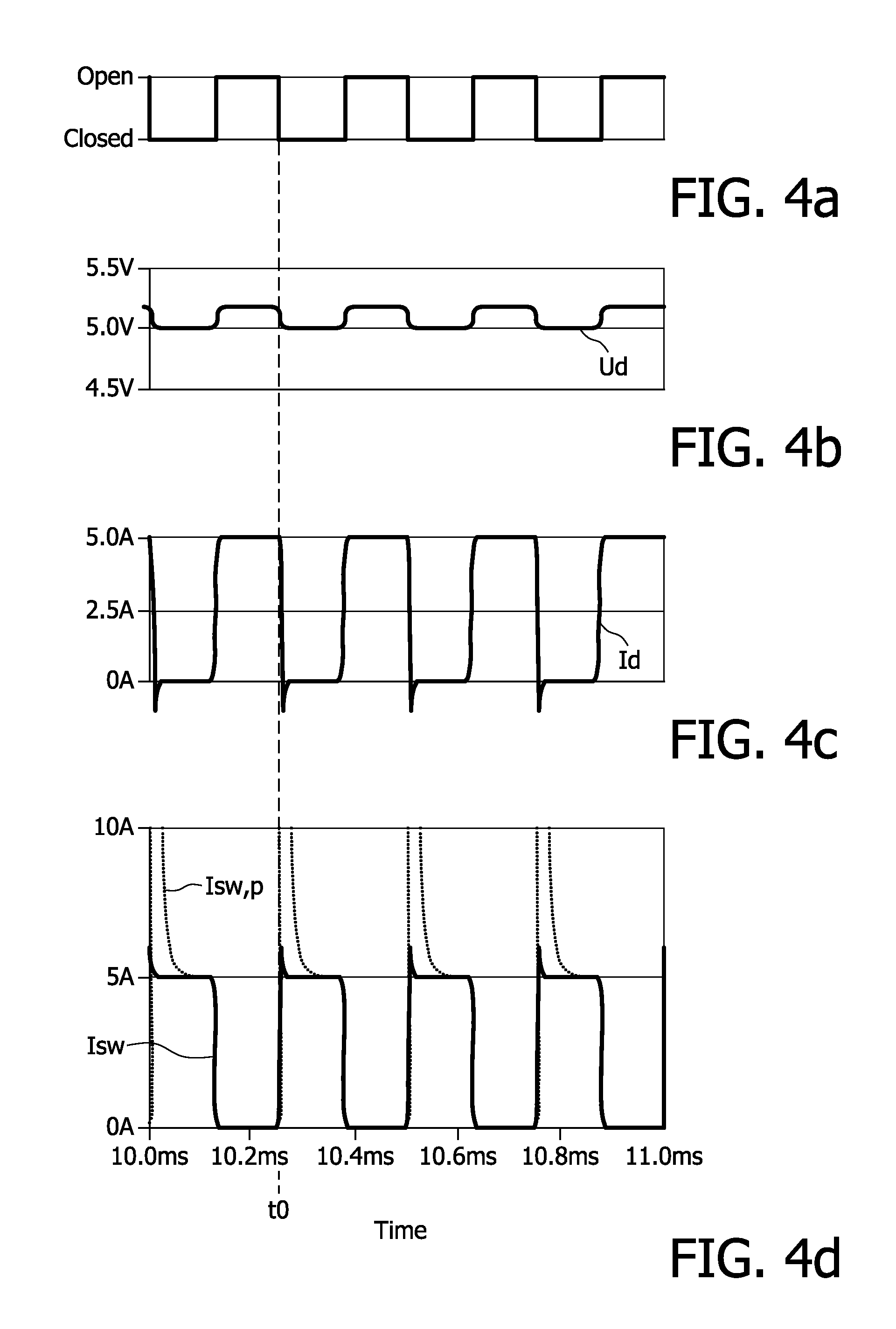Circuit-Arrangement for Modulating an Led and Method for Operating Same
a technology of circuit arrangement and led, applied in the direction of electric variable regulation, process and machine control, instruments, etc., can solve the problems of current spikes and difficulty in achieving high modulation frequencies, and achieve good modulation properties
- Summary
- Abstract
- Description
- Claims
- Application Information
AI Technical Summary
Benefits of technology
Problems solved by technology
Method used
Image
Examples
Embodiment Construction
[0031]FIG. 1 shows a circuit diagram of an embodiment of a circuit-arrangement according to the invention. Here, a current source 1 supplies a current I0=5 A to a parallel connection of an OLED 2 and a modulation-circuit 3, which comprises a zener diode 4 and a switch 5. The switch 5 serves as a switching device and enables at least an open state and a closed state. In the closed state, the modulation-circuit 3 short-circuits the OLED 2, so that the OLED 2 is not illuminated. For modulation of the OLED 2 in terms of dimming, the switch 5 is periodically alternated between the open and the closed state. The zener diode 4 is arranged in reverse bias direction to the forward direction of the OLED 2 and exhibits a zener voltage Uz=5V with a corresponding zener current of 1 A.
[0032]When the current I0 is applied to the circuit-arrangement and the switch 5 is in the open state, as shown, the current charges the intrinsic capacitance C of the OLED 2. When the intrinsic capacitance C is ful...
PUM
 Login to View More
Login to View More Abstract
Description
Claims
Application Information
 Login to View More
Login to View More - R&D
- Intellectual Property
- Life Sciences
- Materials
- Tech Scout
- Unparalleled Data Quality
- Higher Quality Content
- 60% Fewer Hallucinations
Browse by: Latest US Patents, China's latest patents, Technical Efficacy Thesaurus, Application Domain, Technology Topic, Popular Technical Reports.
© 2025 PatSnap. All rights reserved.Legal|Privacy policy|Modern Slavery Act Transparency Statement|Sitemap|About US| Contact US: help@patsnap.com



